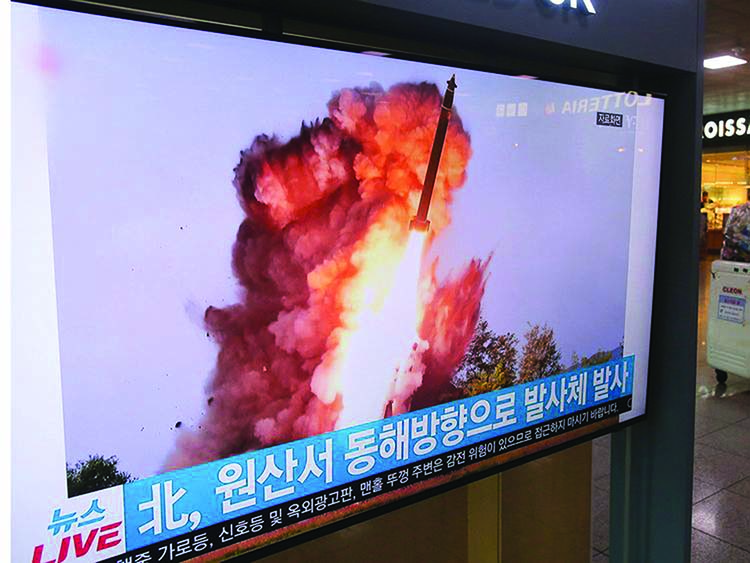
AP, Seoul :
North Korea fired a ballistic missile from the sea on Wednesday, South Korea’s military said, a suggestion that it may have tested an underwater-launched missile for the first time in three years ahead of a resumption of nuclear talks with the United States this weekend.
South Korean military radars detected the North Korean missile flying about 450 kilometers (280 miles) at a maximum altitude of 910 kilometers (565 miles) after liftoff from a site about 17 kilometers (10.5 miles) off the North’s eastern coastal town of Wonsan, Defense Minister Jeong kyeong-doo told lawmakers.
Jeong said he believes the missile’s actual range is longer because North Korea appears to have deliberately elevated its altitude. In the past, North Korea often fired missiles at a lofted angle to avoid neighboring countries. Some experts say the weapon fired Wednesday is a medium-range missile, which North Korea stopped firing along with long-range missiles after it entered into talks with the United States early last year.
Japan lodged an immediate protest, saying the missile landed inside its exclusive economic zone. If confirmed, it would be the first North Korean missile that has landed that close to Japan since November 2017.
The U.S. State Department called on North Korea “to refrain from provocations, abide by their obligations under U.N. Security Council resolutions, and remain engaged in substantive and sustained negotiations to do their part to ensure peace and stability on the Korean Peninsula and achieve denuclearization.”
South Korean military officials wouldn’t officially disclose whether the missile was fired from a submarine, a barge or another platform. But during an emergency National Security Council meeting, officials placed weight on a submarine-launched missile test and expressed “strong concerns,” according to South Korea’s presidential office.
Missiles launched from submarines are harder to detect in advance. Some experts say North Korea is attempting to raise the stakes and ramp up pressure on the United States before their nuclear negotiators meet on Saturday.
“The North is trying to convey a message that time is not on the side of the United States and that it could take a different path if the working-level talks don’t go the way it wanted,” said Du Hyeogn Cha, a visiting scholar at Seoul’s Asan Institute for Policy Studies. If fired at a standard trajectory, the missile could have travelled 1,500-2,000 kilometers (930-1,240 miles), Kim Dong-yub, an analyst from Seoul’s Institute for Far Eastern Studies, wrote on Facebook.

